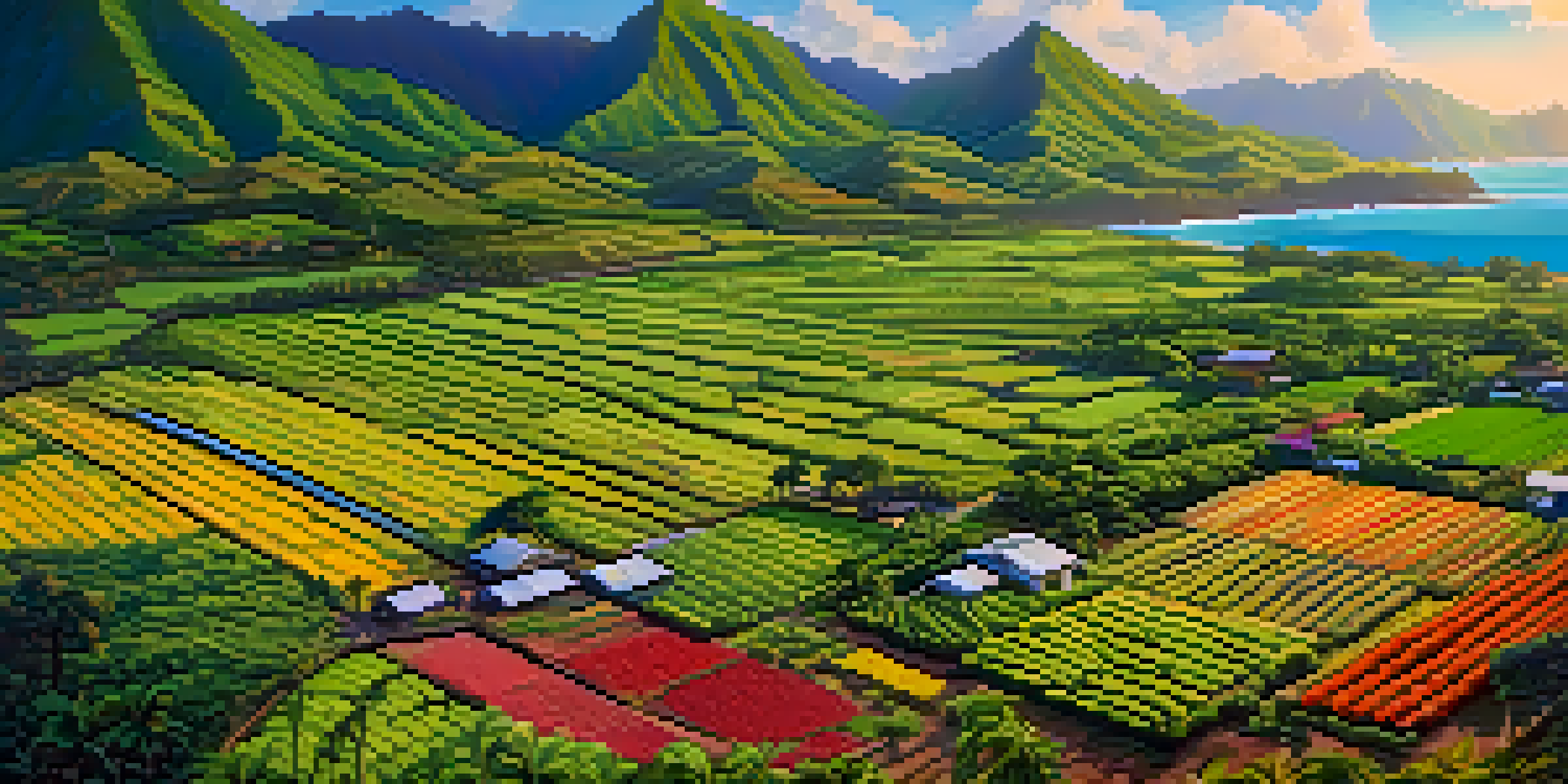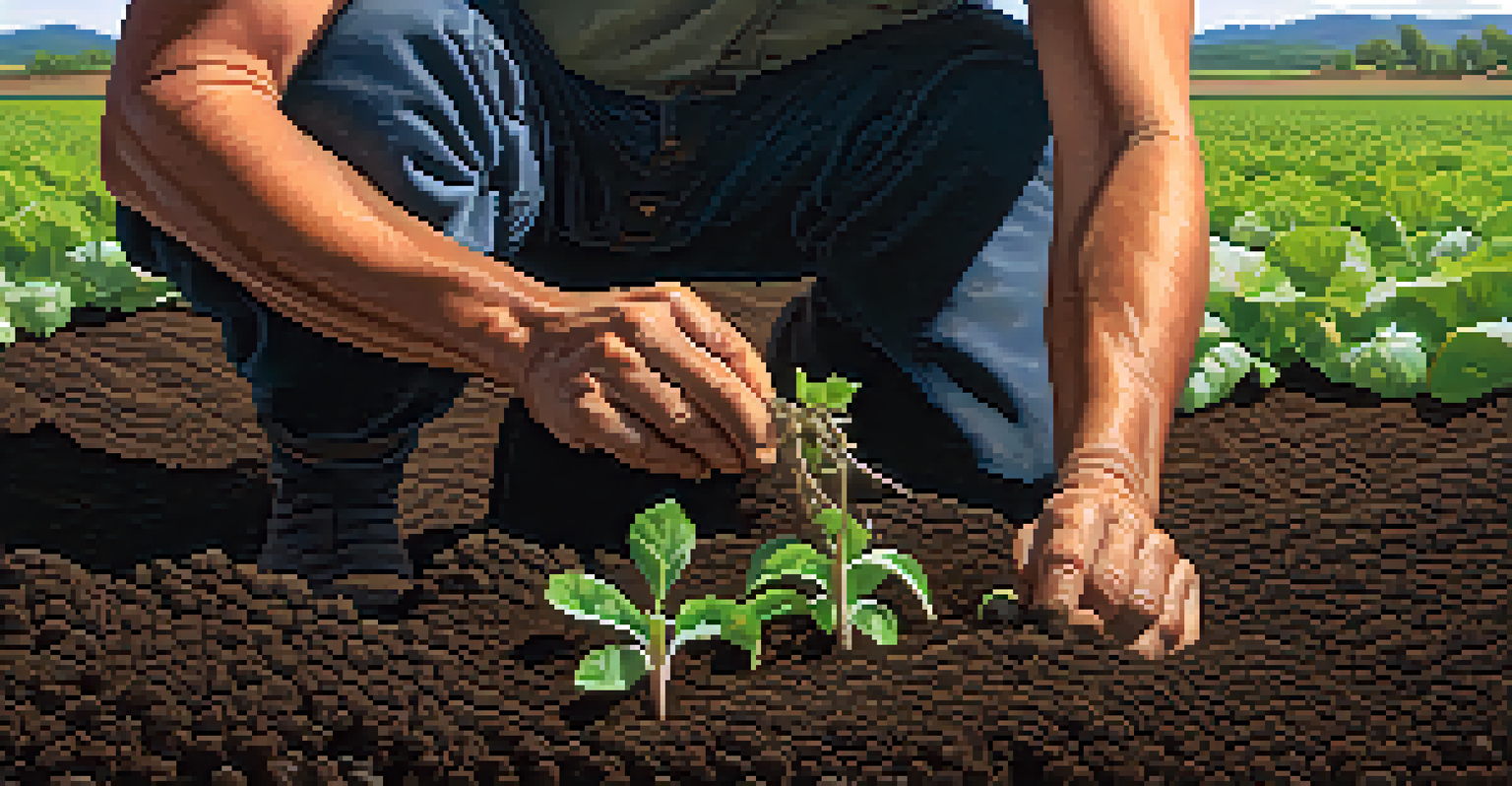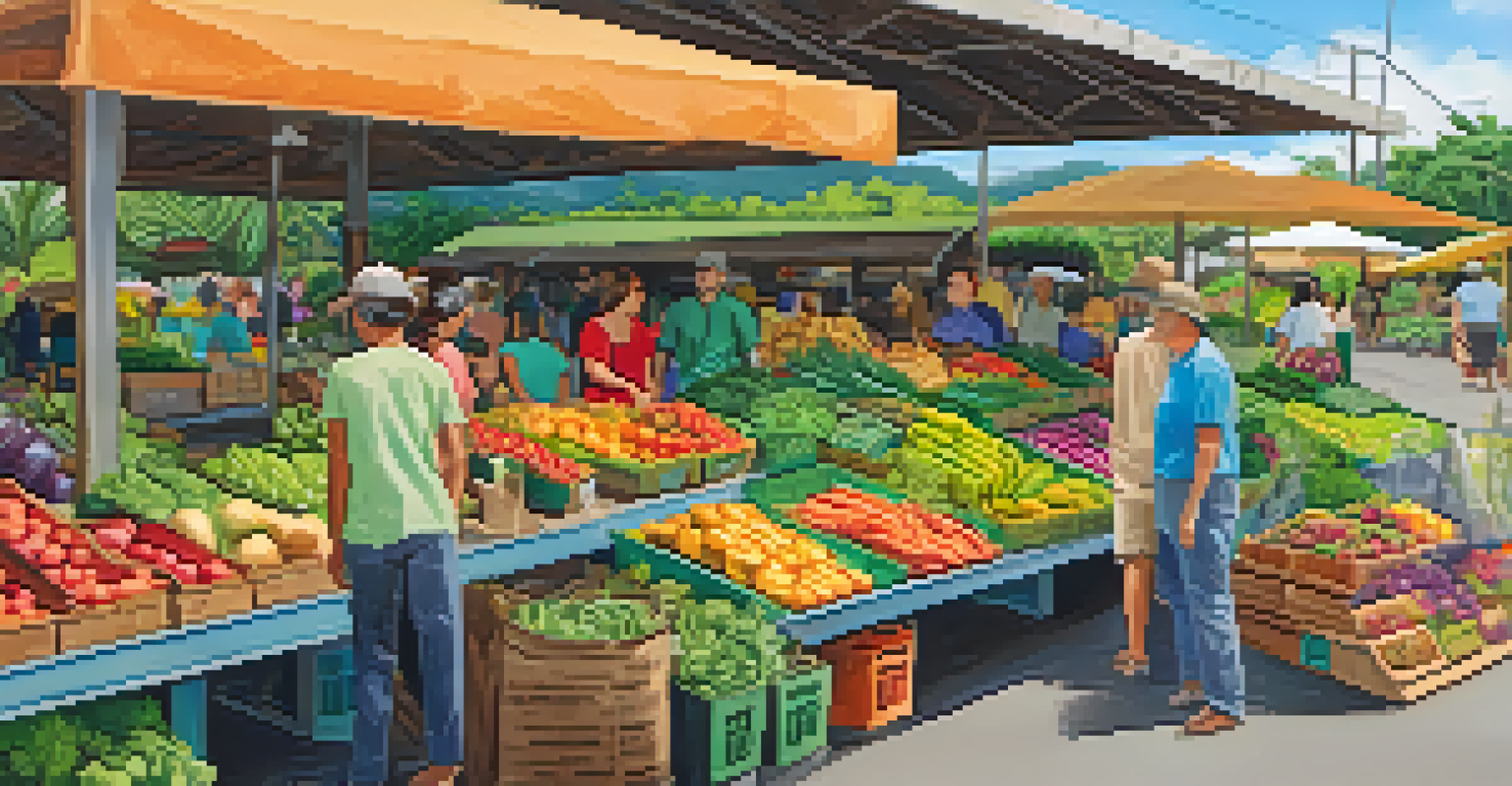Exploring Organic Farming Practices in Hawaii's Agriculture

Understanding Organic Farming: A Quick Overview
Organic farming is a method that emphasizes sustainability and environmental health. It avoids synthetic fertilizers and pesticides, focusing instead on natural processes and materials. This approach not only nurtures the soil but also promotes biodiversity, making it a key player in today’s agricultural landscape.
Organic farming is not a trend; it is a return to a sustainable way of life.
In Hawaii, organic farming takes on unique characteristics due to the islands' diverse ecosystems. Farmers here often utilize traditional techniques passed down through generations, blending them with modern organic practices. This fusion creates a rich tapestry of farming methods that are as varied as the islands themselves.
By prioritizing organic methods, Hawaii's farmers are not just enhancing their crops; they are also protecting the island's delicate environment. This commitment to sustainability is increasingly important, especially in the face of climate change and its challenges.
Key Benefits of Organic Farming in Hawaii
One of the primary benefits of organic farming is its positive impact on soil health. Healthy soil leads to healthier plants, which in turn can produce more nutrient-rich food. In Hawaii, where the volcanic soil is already rich, organic practices can enhance these natural benefits even further.

Additionally, organic farming can help protect Hawaii's unique ecosystems. By avoiding harmful chemicals, farmers reduce the risk of contaminating local water supplies and harming native species. This is especially crucial in Hawaii, where many species are endemic and vulnerable.
Organic Farming Enhances Soil Health
Organic farming practices in Hawaii improve soil health, leading to more nutrient-rich crops and a sustainable agricultural system.
Finally, organic farming supports local economies. By producing organic products, farmers often tap into a growing market of health-conscious consumers. This demand not only boosts sales but also encourages sustainable tourism, as visitors seek out organic experiences on the islands.
Traditional Hawaiian Practices in Organic Farming
Hawaiian farmers have a rich history of sustainable agriculture, often using methods that align closely with organic practices. Techniques such as 'kalo' (taro) cultivation and 'ahu' (mounded gardens) showcase a deep understanding of the land and its capabilities. These practices emphasize the importance of working with nature rather than against it.
The future will be green, or not at all.
The use of native plants and companion planting is another example of traditional methods that are still relevant today. By planting compatible species together, farmers can naturally deter pests and enhance crop growth. This not only minimizes the need for external inputs but also promotes a balanced ecosystem.
These time-tested methods reflect a philosophy of stewardship and respect for the land, which resonates strongly in the modern organic movement. As more farmers incorporate these practices, they not only preserve cultural heritage but also contribute to a more sustainable future.
Innovative Techniques in Hawaii's Organic Farming
In addition to traditional methods, Hawaiian farmers are also embracing innovative techniques that enhance organic farming. Practices like aquaponics and hydroponics are gaining traction, allowing for food production in urban settings. These systems use water efficiently and can be integrated into existing landscapes without requiring large plots of land.
Moreover, cover cropping is becoming a popular practice among organic farmers in Hawaii. By planting specific crops during off-seasons, farmers can improve soil fertility, prevent erosion, and suppress weeds naturally. This not only enriches the soil but also reduces the need for chemical interventions.
Community Supported Agriculture Grows
CSAs in Hawaii foster a direct connection between farmers and consumers, encouraging sustainable eating habits and supporting local economies.
These innovative techniques showcase the adaptability of Hawaiian farmers, as they seek to meet the challenges of modern agriculture while staying true to organic principles. The blending of tradition and innovation makes Hawaii a fascinating case study in sustainable farming.
The Role of Community Supported Agriculture (CSA)
Community Supported Agriculture (CSA) has become a vital part of the organic farming landscape in Hawaii. This model allows consumers to buy shares of a farm's harvest, providing farmers with upfront capital and fostering a direct connection with their customers. It creates a sense of community and shared responsibility for the land.
CSAs also encourage consumers to try seasonal and local produce, which can lead to more sustainable eating habits. By participating in a CSA, individuals can experience the variety of crops that Hawaii has to offer, from exotic fruits to leafy greens, all while supporting local farmers.
Moreover, CSAs often involve educational components, where farmers share insights about organic farming practices. This not only empowers consumers with knowledge but also strengthens the bond between the community and its food sources.
Challenges Facing Organic Farmers in Hawaii
Despite the many benefits, organic farming in Hawaii is not without its challenges. One significant issue is the high cost of organic certification, which can be a barrier for small farmers. Many may struggle to keep up with the rigorous standards required, leading to fewer farmers being able to market their products as organic.
Additionally, Hawaii's unique climate can pose challenges for organic farming. Issues such as pests and diseases can be exacerbated by the warm, humid conditions. Farmers must be vigilant and innovative to manage these threats without resorting to synthetic solutions.
Challenges Persist for Organic Farmers
Despite its benefits, organic farming in Hawaii faces challenges such as high certification costs and competition from conventional farming methods.
Lastly, the competition with conventional farming methods can create economic pressure. Organic products often come with higher price tags, which can deter some consumers. Educating the public about the long-term benefits of supporting organic farming is crucial to overcoming this hurdle.
The Future of Organic Farming in Hawaii
Looking ahead, the future of organic farming in Hawaii appears promising, fueled by a growing awareness of sustainability. As consumers increasingly prioritize health and environmental impact, the demand for organic products is likely to rise. This shift in consumer behavior can encourage more farmers to adopt organic practices.
Moreover, local initiatives and government support are paving the way for a more sustainable agricultural future. Programs aimed at educating farmers about organic methods and providing financial assistance for certification can help alleviate some of the burdens currently faced.

Ultimately, the journey towards more widespread organic farming in Hawaii will require collaboration among farmers, consumers, and policymakers. By working together, they can build a resilient agricultural system that honors the land and its resources for generations to come.